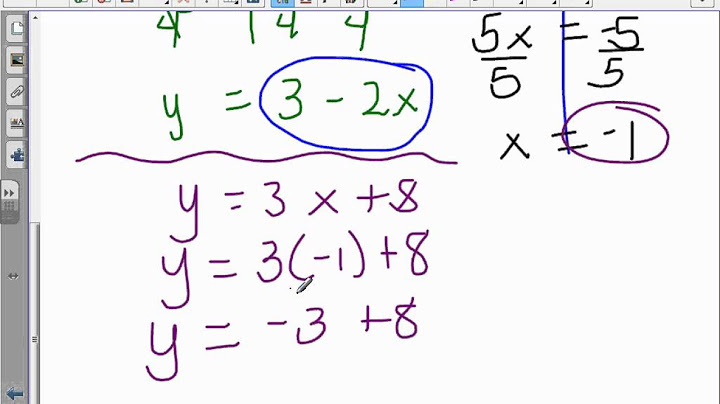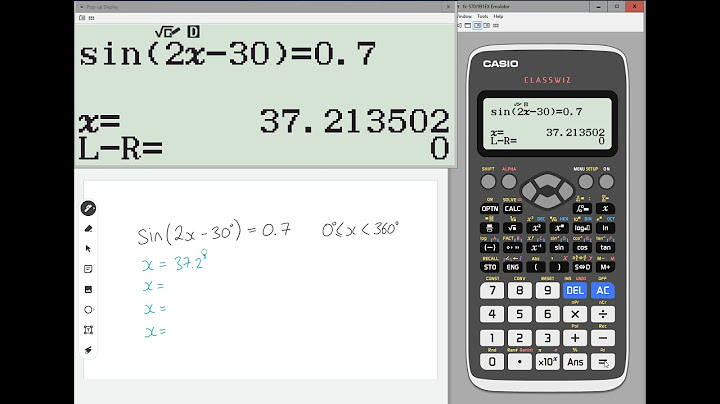By the end of this section, you will be able to: NoteBefore you get started, take this readiness quiz. If you miss a problem, go back to the section listed and review the material.
After defining the terms expression and equation early in Foundations, we have used them throughout this book. We have simplified many kinds of expressions and solved many kinds of equations. We have simplified many rational expressions so far in this chapter. Now we will solve rational equations. The definition of a rational equation is similar to the definition of equation we used in Foundations. Definition: RATIONAL EQUATIONA rational equation is two rational expressions connected by an equal sign. You must make sure to know the difference between rational expressions and rational equations. The equation contains an equal sign. \[\begin{array}{cc} {\textbf{Rational Expression}}&{\textbf{Rational Equation}}\\ {\frac{1}{8}x+\frac{1}{2}}&{\frac{1}{8}x+\frac{1}{2}=\frac{1}{4}}\\ {\frac{y+6}{y^2−36}}&{\frac{y+6}{y^2−36}=y+1}\\ {\frac{1}{n−3}+\frac{1}{n+4}}&{\frac{1}{n−3}+\frac{1}{n+4}=\frac{15}{n^2+n−12}}\\ \nonumber \end{array}\] Solve Rational EquationsWe have already solved linear equations that contained fractions. We found the LCD of all the fractions in the equation and then multiplied both sides of the equation by the LCD to “clear” the fractions. Here is an example we did when we worked with linear equations:
We will use the same strategy to solve rational equations. We will multiply both sides of the equation by the LCD. Then we will have an equation that does not contain rational expressions and thus is much easier for us to solve. But because the original equation may have a variable in a denominator we must be careful that we don’t end up with a solution that would make a denominator equal to zero. So before we begin solving a rational equation, we examine it first to find the values that would make any denominators zero. That way, when we solve a rational equation we will know if there are any algebraic solutions we must discard. An algebraic solution to a rational equation that would cause any of the rational expressions to be undefined is called an extraneous solution. An extraneous solution to a rational equation is an algebraic solution that would cause any of the expressions in the original equation to be undefined. We note any possible extraneous solutions, c, by writing \(x \ne c\) next to the equation. How to Solve Equations with Rational Expressions Example \(\PageIndex{1}\)Solve: \(\frac{1}{x}+\frac{1}{3}=\frac{5}{6}\).      Example \(\PageIndex{2}\)Solve: \(\frac{1}{y}+\frac{2}{3}=\frac{1}{5}\). Answer\(−\frac{15}{7}\) Example \(\PageIndex{3}\)Solve: \(\frac{2}{3}+\frac{1}{5}=\frac{1}{x}\). Answer\(\frac{15}{13}\) The steps of this method are shown below. Definition: SOLVE EQUATIONS WITH RATIONAL EXPRESSIONS.
We always start by noting the values that would cause any denominators to be zero. Example \(\PageIndex{5}\)Solve: \(1−\frac{2}{a}=\frac{15}{a^2}\). Answer5, −3 Example \(\PageIndex{6}\)Solve: \(1−\frac{4}{b}=\frac{12}{b^2}\). Answer6, −2 Example \(\PageIndex{8}\)Solve: \(\frac{1}{x−1}=\frac{2}{3x}\). Answer−2 Example \(\PageIndex{9}\)Solve: \(\frac{3}{5n+1}=\frac{2}{3n}\). Answer−2 When one of the denominators is a quadratic, remember to factor it first to find the LCD. Example \(\PageIndex{11}\)Solve: \(\frac{2}{x+1}+\frac{1}{x−1}=\frac{1}{x^2−1}\). Answer\(\frac{2}{3}\) Example \(\PageIndex{12}\)Solve: \(\frac{5}{y+3}+\frac{2}{y−3}=\frac{5}{y^2−9}\) Answer2 Example \(\PageIndex{14}\)Solve: \(\frac{2}{x+5}−\frac{1}{x−1}=1\). Answer−1, −2 Example \(\PageIndex{15}\)Solve: \(\frac{3}{x+8}−\frac{2}{x−2}=1\). Answer−2, −3 Example \(\PageIndex{17}\)Solve: \(\frac{x+13}{x^2−7x+10}=\frac{6}{x−5}−\frac{4}{x−2}\). Answerno solution Example \(\PageIndex{18}\)Solve: \(\frac{y−14}{y^2+3y−4}=\frac{2}{y+4}+\frac{7}{y−1}\). Answerno solution The equation we solved in Example had only one algebraic solution, but it was an extraneous solution. That left us with no solution to the equation. Some equations have no solution. Example \(\PageIndex{20}\)Solve: \(\frac{x}{18}+\frac{x+6}{9x}=\frac{2}{3x}\). −2 Example \(\PageIndex{21}\)Solve: \(\frac{y+5}{5y}+\frac{y}{15}=\frac{1}{y}\). Answer−3 Example \(\PageIndex{23}\)Solve: \(\frac{x}{x+4}=\frac{32}{x^2−16}+5\). Answer−4, 3 Example \(\PageIndex{24}\)Solve: \(\frac{y}{y+8}=\frac{128}{y^2−64}+9\). Answer7 Example \(\PageIndex{26}\)Solve: \(\frac{y}{5y−10}−\frac{5}{3y+6}=\frac{2y^2−19y+54}{15y^2−60}\). Answerno solution Example \(\PageIndex{27}\)Solve: \(\frac{z^2}{z+8}−\frac{3}{4z−8}=\frac{3z^2−16z−68}{z^2+8z−64}\). Answerno solution Solve a Rational Equation for a Specific VariableWhen we solved linear equations, we learned how to solve a formula for a specific variable. Many formulas used in business, science, economics, and other fields use rational equations to model the relation between two or more variables. We will now see how to solve a rational equation for a specific variable. We’ll start with a formula relating distance, rate, and time. We have used it many times before, but not usually in this form. Example \(\PageIndex{29}\)Solve: \(\frac{A}{L}=W\) for L. Answer\(L=\frac{A}{W}\) Example \(\PageIndex{30}\)Solve: \(\frac{F}{A}=M\) for A. Answer\(A=\frac{F}{M}\) Example uses the formula for slope that we used to get the point-slope form of an equation of a line. Example \(\PageIndex{32}\)Solve: \(\frac{y−2}{x+1}=\frac{2}{3}\) for x. Answer\(x=\frac{3y−8}{2}\) Example \(\PageIndex{33}\)Solve: \(x=\frac{y}{1−y}\) for y. Answer\(y=\frac{x}{1+x}\) Be sure to follow all the steps in Example. It may look like a very simple formula, but we cannot solve it instantly for either denominator. Example \(\PageIndex{35}\)Solve: \(\frac{1}{a}+\frac{1}{b}=c\) for a. Answer\(a=\frac{b}{cb−1}\) Example \(\PageIndex{36}\)Solve: \(\frac{2}{x}+\frac{1}{3}=\frac{1}{y}\) for y. Answer\(y=\frac{3x}{6+x}\) Key Concepts
Glossaryrational equationA rational equation is two rational expressions connected by an equal sign.extraneous solution to a rational equationAn extraneous solution to a rational equation is an algebraic solution that would cause any of the expressions in the original equation to be undefined. |

Related Posts
Advertising
LATEST NEWS
Advertising
Populer
Advertising
About

Copyright © 2024 chuyencu Inc.


















